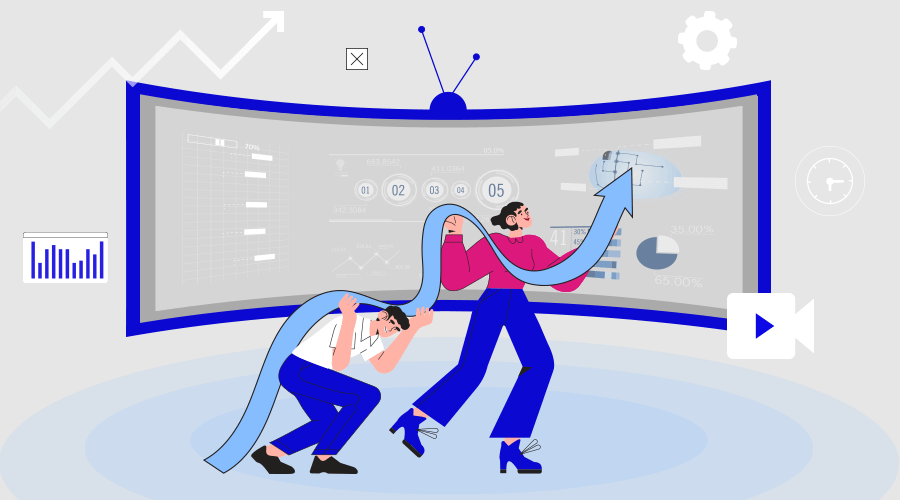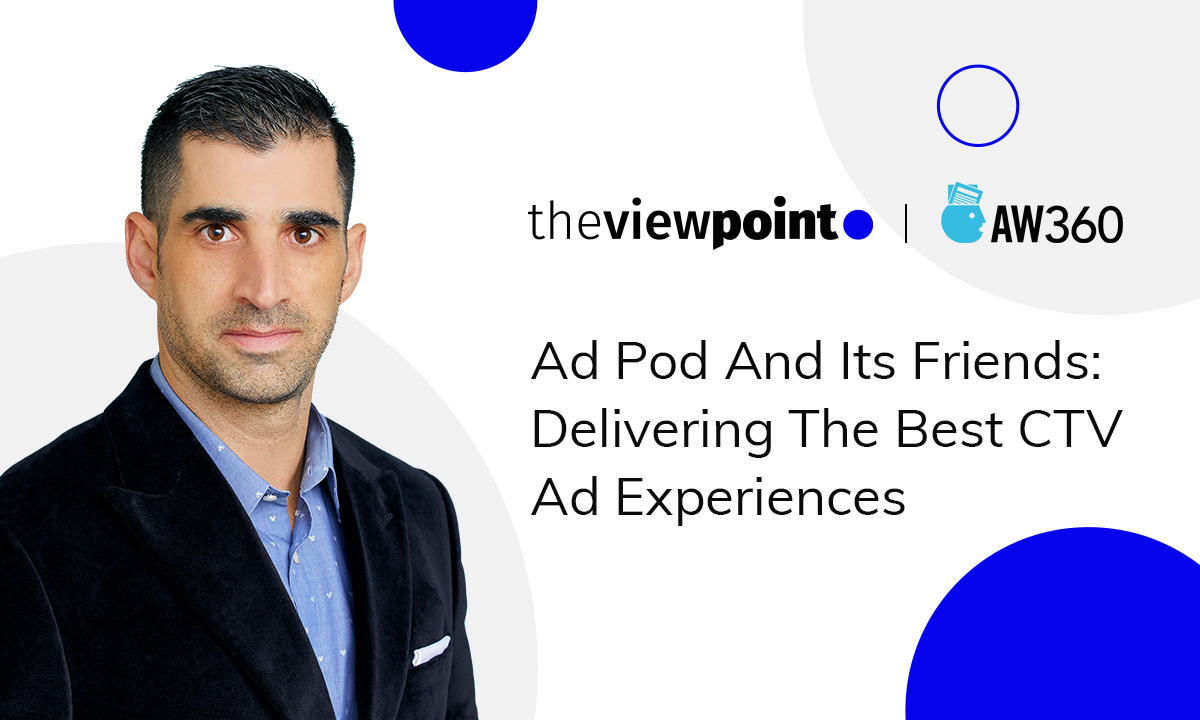
Data-Driven TV: the Future of Television or an Unrealistic Concept?
Digital technologies are constantly developing in every way we can think of – from entertainment to studying and from science to advertising. The latter received the greatest boost in its rich history through digital. However, some fields are still lagging behind and rely on conventional advertising technologies. In the linear TV ad industry, for instance, most broadcasters sell ad spots to advertisers directly with a lack of reliable targeting settings or performance metrics which can push businesses away. But that is hopefully about to change too with the adoption of digital instruments in traditional TV advertising. Data-driven technologies provide substantial benefits for targeting that increase ad effectiveness while decreasing spending at the same time. To put it briefly, it’s just generally better than traditional linear TV advertising for all parties involved.
What is Data-Driven TV Advertising?
Let’s deal with the terminology first, so what exactly is ‘data-driven TV’? It is an automated data-driven technology for buying ads on both linear and advanced TV. This usually applies to the programmatic ad buying approach, but there are exceptions. Data-driven also includes the CTV/OTT environment, addressable TV, and its programmatic counterpart. For that, the viewing device collects non-personal user information like viewing behavior and shares it with advertisers to deliver more personalized offers to their target audiences.
That information is particularly helpful for advertisers to buy more effective ad spots, find specific viewing segments, set up better display frequency, extend reach, and even get detailed insights on campaign efficiency. Now, instead of conducting long-term studies to learn the best time slots and programs for particular ads to feature, marketers can have a two-minute-read statistical overview and adjust accordingly. That’s how important a data-driven approach is.
The data-driven native advertising approach was born in the display and mobile ad fields that obviously utilized advanced digital trends sooner than the linear TV old-timer. But as the technology adoption accelerates, marketers naturally push it onto traditional mediums to benefit from improved targeting, measurement, and attribution. At the same time, content owners (publishers) capitalize on a better understanding of their audience’s interests which helps achieve higher yields. A classic win-win sandwich.
Privacy and the Importance of First-Party Data
As adtech is evolving into a highly moderated and privacy-reinforced industry alongside the imminent rejection of third-party cookies and big tech raising their ‘walled gardens’, many digital advertising processes will change. As a result, marketers will have to rely more on first-party user data. That is how they can ensure that their ad messages and creatives are effective. It is not enough to target the right audience, companies should also find ways to reach out to their potential customers. That is why businesses need trustworthy data spanning preferences and device software updates to retrieve more details on what their audiences prefer, how they behave, what they demand at specific periods of time, and more. In other words, get a comprehensive understanding of customer identity. For that, brands may need to collect massive amounts of first-party information. Also, they should find approaches to handling possible obstacles (e.g., data silo management), as well as different format integration, accessibility restrictions, and various other privacy and security-related issues.
A great example of first-party data usage on advanced TV comes from Samsung which allowed their advertisers to plan their TV campaigns utilizing the company’s own datasets with the Onboarding Partner Program. The program works within Samsung Ads’ AVOD ecosystem and even includes a data management platform to track viewers’ insights with a planning tool called Audience Advisor. When advertisers and marketers want to mix first-party and third-party datasets, they can benefit from using this solution, which greatly contributes to the understanding of an audience’s scale and metrics like conversion rates or incremental reach.
The accuracy and credibility of first-party data, nonetheless, could still be complemented by transparent third-party datasets. So, in order to obtain additional scale and activation, marketers should also manage these sources. For instance, they might need to connect user data from multiple channels to acquire deterministic datasets instead of relying on probabilistic sources. The evolution of digital privacy forces many fields to develop and change the rules of the game. For instance, the role of data transparency between content publishers and marketers is becoming more crucial than ever to the whole ecosystem.
The Future of Data-Driven TV
The future of the data-driven linear TV industry is more-or-less defined, and user information is of utmost importance in it. However, utilizing integrated campaigns is going to be crucial too, especially for marketers. For broadcasters, partnering with data providers will be indispensable to bridge the gap between the buy and sell sides. The main goal for advertising market participants is to learn how to exchange data in a way that won’t let any of the sides of the collaboration keep that information for themselves.
One of the ways of achieving that is through so-called data clean rooms. Basically, they are digital spaces where partners, normally content creators and advertisers, keep, review, and share first-party data that they have already gathered for analysis. Such spaces fully comply with privacy requirements as the data stored is anonymized, layered, encrypted, and things like personal identifiers are not included. It’s expected that brands and media owners will incorporate these kinds of deals more often within the data-driven TV environment.
The future is shaping into a more omnichannel form with these data measurement changes. Since television is heading away from the broad reach type of advertising, marketers will finally be able to use the same measuring techniques they employ on other digital/social domains. That would also mean advertisers could optimize their TV campaigns as they perform. The dynamic of A/B testing and technological application is going to accelerate exponentially.
Takeaways
User data has been firmly established as the key component for display, mobile, and other digital advertising fields. Now it’s time for television to enter their ranks as the adoption of consumer technology accelerates. Nonetheless, the shift to a new dimension of data-driven advertising is not going to be that straightforward, bearing in mind the privacy-related uncertainty facing the adtech industry. Marketers, however, will not miss the chance to capitalize on improving measurement and attribution data-driven technology brings. By combining first-party datasets in a privacy-secure fashion, this field of advertising will grant substantial yields for both advertisers and channel owners. There are lots of opportunities ahead, and there arguably was never a better time to invest in TV technology than now.
Related
Programmatic TV Tax Day is Not Just April 15. It's Every Day
This blog examines the significant "AdTech tax" in Connected TV advertising, advocating for Tatari's direct integration with publishers to bypass hidden fees, resulting in substantial cost savings and enhanced transparency.
Read more
Ad Pod And its Friends: Delivering the Best CTV Ad Experiences
Aiming to stand out from the crowd and surpass consumers’ expectations, CTV advertisers have to be allied with publishers and very savvy at applying innovative advertising techniques, like frequency capping, competitive ad separation, and deduplication. Though still raising a lot of eyebrows, these tools have already become the next big thing in the advertising world. So, before diving deep into the details of ad pod management, let’s take a sneak peek behind the scenes of modern CTV play.
Read more
Everything You Need to Know About Real-Time Bidding
As programmatic advertising is gaining momentum, RTB or real-time bidding comes in. In fact, most platforms in ad tech today are RTB enabled. But what does that actually mean? What is an RTB platform and why is it so important for digital marketers? Let’s get the answers to these questions and more.
Read more


